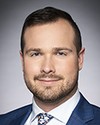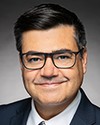I will, to the best of my knowledge, because I'm not a scientist, practically.
We have different departments in the Mohawk Council of Kahnawake. A predominant one would be, for example, the environment protection office. The work they do is to protect the lands that we have, unfortunately, been huddled into. They do a lot of work monitoring creeks, soils, waterways and air. They look at this in a natural science way, sending it out to get tested: “What's in the air? What's in here?” At the same time, we're looking at global warming. We're looking at all the different things that have come up around us in society, including cars, trains and boats or ships. As you know, all three pass through our community. We're looking at how that impacts the air quality and the soil, and how the earth cleans itself.
Mother earth has always been able to clean itself. It's always been able to sustain itself and take care of itself. However, with human interaction and human invasion in general, it has a hard time trying to keep up. There is more damage done than the earth can repair. As you know, trees can clean air and soil. The roots.... They're all connected. The teachings of all of that are within the languages and stories. I know that, for some, this is hard to understand. How can you learn something so scientific from a story, from passing it on and telling stories? However, if you really pay attention to the words and to what the root of the story is, you learn why these relationships are so important to one another. If we start cutting down all the trees and just save the roots, the air quality is gone. The soil quality is gone because those trees will end up dying. It is the same thing for plants. In Canada, we have a lot of invasive species that have come onto this land and destroyed the natural ecosystems that work around us.
On top of what KEPO does in its own department, it also works with our consultation committee, which very often—on a weekly basis—gets submissions for consultation in order to check off boxes in different permit applications. Unfortunately, that's all it ends up being. It's someone to talk to. It's just a checked-off box: “Okay, we talked to them and that's it.” They're not actually taking in our information, our understanding of the world or our hunting and harvesting practices. All of those are balanced with what we know about the science and the relationships among all the natural beings.
We can't do too much hunting, or else the balance won't be sustainable. There are deer culls that happen. They go hunting for deer because there is an overpopulation. That is another way of trying to sustain balance. There are all these different methodologies in my community, from the offices and the departments I work with in the Mohawk Council of Kahnawake to community members developing programs to revitalize and spread that knowledge, because a lot of it was.... I don't want to say that it was taken from us, because we still have it. However, they tried to suppress a lot of it. Very few people hold the knowledge. Now, from what I'm witnessing, our community members are trying to revitalize that. It's very cultural, but it's also scientific. There's a reason why we did things the way we did them.
Another thing is ceremony. This is probably a strange concept, incorporating ceremony into science. However, this is how we greet the natural world and everything that was given to us by our Creator. All of that is very important. It reminds us that we are just living on this land. It is not ours. These beings are not ours to own. It's not ours to destroy. We have to work together in order to see what we call the “yearly cycle” continue. Those ceremonies are based in language and ways of life, reminding us seasonally what we give thanks for, why we give thanks, what these different medicines are for and what the roles and responsibilities are of the animals, trees, plants and waters. If we have no fish in the water, there's not going to be any clean water. It's those kinds of things.
My Kahnawake people, which is the Mohawk people, have known this since time immemorial. We have known these teachings and carried them on using stories to tell children so that, when they are young, they start to understand. When you tell stories to children, it's a lot more interesting and a lot more engaging for children than having a speech like this. There are different tools and different methodologies that come into play and, of course, we want our children to grow up knowing these things, holding these things, instead of having to teach them later in life, instead of having to teach them when it's a little too late.





